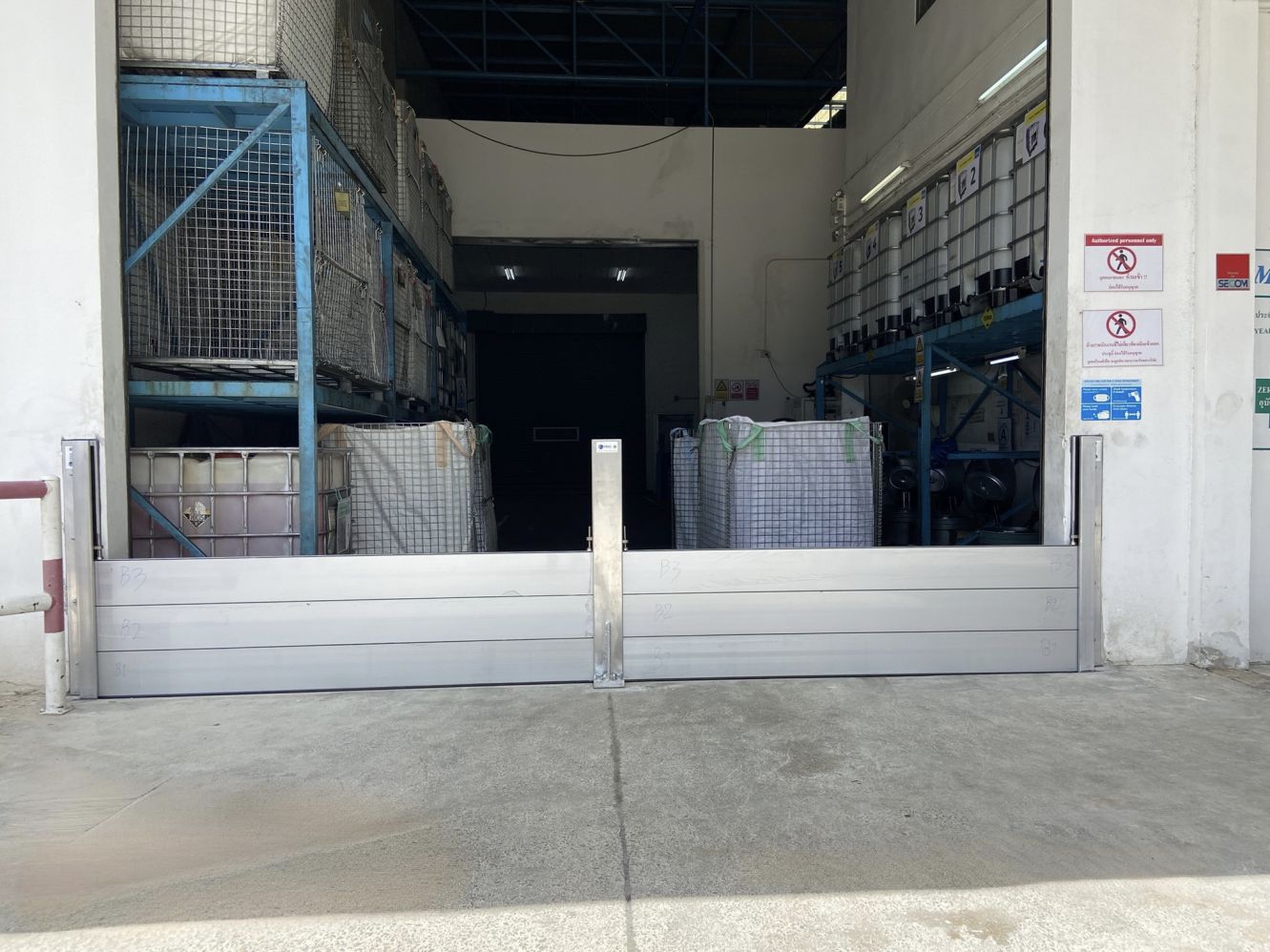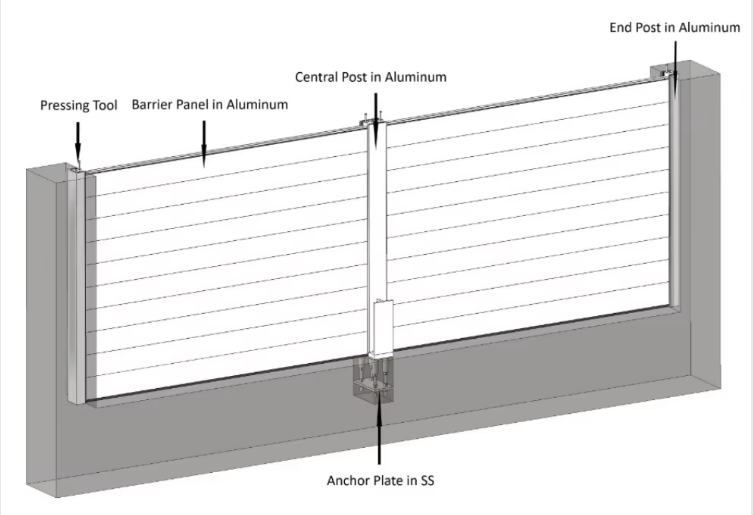 2025-02-11
2025-02-11
Flooding poses a significant threat to homes and businesses, making effective protection essential. When considering purchasing demountable flood barriers, it’s important to choose the right ones to ensure your property stays safe during emergencies. These barriers offer long-term cost savings compared to other methods. Their stackable design simplifies storage and transport, while maintenance-free materials reduce upkeep expenses. Unlike permanent flood walls, they are reusable and practical for urban areas. By carefully evaluating your options, you can invest in a solution that balances affordability with reliability, safeguarding your property for years to come.

Demountable flood barriers are temporary yet highly effective solutions designed to protect properties from flooding. Unlike permanent flood walls, these barriers can be installed and removed as needed. They consist of lightweight panels, often made from durable materials like anodized aluminum, which makes them easy to handle and transport. You can use these barriers to secure doorways, create a perimeter around your property, or protect critical infrastructure. Their modular design allows you to adjust the height based on the predicted flood levels, offering flexibility for various scenarios.
| Feature | Description |
| Lightweight and Easy to Handle | Each panel weighs just 2.4 kg per meter, allowing for easy handling and transport by one person. |
| Modular and Adjustable Height | Standard height is 200mm, with the ability to stack panels for customized flood protection height. |
| Corrosion-Resistant Construction | Made from anodized aluminum alloys, ensuring durability and minimal maintenance. |
| Rapid Deployment | Can be deployed quickly with a small team, reducing flood damage risk. |
| Ground Seal Technology | Features EPDM seals for efficient water blocking and simple installation. |
| Minimal Impact on the Landscape | Easily removable without permanent marks, unlike traditional barriers. |
| Cost-Effective and Versatile | Affordable solution that adapts to different flood scenarios and is easy to store. |
These barriers function by creating a watertight seal that prevents floodwaters from entering protected areas. When you install them, the panels interlock securely, forming a continuous barrier. The ground seal technology, often made from EPDM rubber, ensures no water seeps through the base. You can deploy them quickly with a small team, making them ideal for emergencies. Once the flood threat passes, you can disassemble and store them compactly for future use. Their adaptability allows you to use them in various locations, such as doorways or along property perimeters.
Using demountable flood barriers offers several advantages. First, they allow you to respond quickly to flood alerts, minimizing potential damage. Their reusability makes them a cost-effective choice compared to permanent solutions. You can install and remove them with minimal disruption to your daily life. Crafted from high-quality materials, these barriers provide durability and reliability. Additionally, their compact storage and corrosion-resistant construction reduce environmental impact. Whether you need protection for residential or commercial properties, these barriers deliver robust flood defense.
Quick response to flood alerts, reducing potential property damage.
Cost-effectiveness due to reusability.
Minimal disruption to daily life during installation and removal.
Durability and reliability from high-quality materials.
Environmental benefits from compact storage and corrosion-resistant materials.
When flooding threatens, every second counts. You need a system that can be deployed quickly to minimize damage. A well-designed setup ensures smooth and efficient installation. Some systems may seem simple but can become cumbersome due to multiple connections or small parts. Newflag Technology’s demountable flood barriers address this issue with partially pre-installed components. This design allows a small team to set up the barriers rapidly during a flood alert. Quick deployment ensures your property is protected before water levels rise.
Ease of assembly and disassembly
Ease of use is another critical factor. You should look for barriers that are lightweight and modular. These features make assembly and disassembly straightforward. Newflag’s barriers, for example, use anodized aluminum panels that are easy to handle and transport. Once the flood threat passes, you can disassemble the system and store it compactly for future use. This simplicity reduces stress and ensures you’re ready for the next emergency.
The number of operators required depends on the size and complexity of the barrier system. You should evaluate the number of barriers and their locations to determine how many people you’ll need. Newflag’s demountable flood barriers are designed for small teams. Their lightweight structure and modular design allow a few workers to assemble them into a solid flood wall quickly.
Minimal training should be enough to deploy your barriers effectively. Newflag’s system simplifies the process, making it accessible even for first-time users. However, you should ensure your team understands the setup procedure. If you lack sufficient personnel or expertise, consider automatic flood barriers as an alternative.
Your property’s layout plays a significant role in choosing the right barriers. You need to ensure the system fits seamlessly with doorways, windows, or other vulnerable areas. Modular barriers, like those from Newflag, offer adjustable heights and configurations. This flexibility allows you to customize the setup based on your property’s unique design.
Compatibility with existing infrastructure
The barriers should integrate smoothly with your existing infrastructure. For example, ground seals must create a watertight connection with the surface. Newflag’s barriers feature EPDM seals that ensure effective water blocking. This compatibility enhances the system’s reliability and protects your property from potential leaks.
When purchasing demountable flood barriers, you should prioritize materials that ensure long-term reliability. High-quality barriers often use anodized aluminum alloys, which provide excellent corrosion resistance and durability. These materials are designed to withstand harsh conditions, including exposure to river water, seawater, and extreme weather. Their long lifespan, often exceeding 20 years, makes them a dependable choice for flood protection.
| Material Type | Properties |
| Corrosion-resistant materials | Suitable for marine and corrosive environments |
| Anodized aluminum alloys | Excellent corrosion resistance and durability |
| Long lifespan | Designed to remain corrosion-free for over 20 years |
Environmental factors can significantly impact the durability of flood barriers. You need a system that resists corrosion and performs well in challenging conditions. Barriers made from anodized aluminum alloys (6005 and 6063) excel in these environments. They resist damage from prolonged exposure to water and weather, ensuring minimal maintenance. This durability guarantees reliable performance during emergencies.
Constructed from corrosion-resistant materials for marine and corrosive environments.
Designed to withstand river water, seawater, and harsh weather conditions
Minimal maintenance required, ensuring a long lifespan.
Investing in flood barriers involves upfront costs, but you should also consider long-term savings. High-quality barriers, like those made from anodized aluminum, offer durability and reusability. Their long lifespan reduces the need for frequent replacements, making them a cost-effective solution. By choosing reliable materials, you minimize repair and replacement expenses over time.
Factor in costs for deployment, installation, and maintenance.
Include expenses for spare parts, repairs, and personnel training.
Opt for designs that simplify inspections and cleaning to save time and money.
Regulatory Compliance Meeting local and national flood protection standards
Flood barriers must meet specific standards to ensure effectiveness. You should verify that the barriers comply with local and national regulations. These standards often include hydrostatic testing to confirm the barriers can withstand water pressure. Choosing certified products ensures your system meets safety and performance requirements.
Certifications and approvals
Certifications provide assurance of quality and reliability. Look for barriers with certifications like Silver, Gold, or Platinum levels, which indicate rigorous testing and inspection. These certifications involve material testing, product inspections, and follow-up audits to maintain compliance.
| Certification Level | Hydrostatic Test Requirement | Additional Requirements |
| Silver | At least one foot | Material testing, plant and product inspection, follow-up verification |
| Gold | At least two foot | Material testing, plant and product inspection, follow-up verification |
| Platinum | At least three foot | Material testing, plant and product inspection, follow-up verification |

Key benefits include:
Versatility: Suitable for homes, businesses, and public spaces.
Adjustable Height: Allows customization based on predicted flood levels.
Ease of Deployment: Quick installation and dismantling, ideal for urban areas.
Cost-Effectiveness: Affordable and requires minimal maintenance.
Eco-Friendliness: Reusable and causes minimal disruption to the landscape.
Ideal use cases
Aluminum barriers work well in urban and residential settings. Their adaptability makes them ideal for protecting doorways, windows, and property perimeters. You can also use them in commercial areas where quick deployment and compact storage are essential. These barriers are perfect for locations requiring temporary yet reliable flood protection.